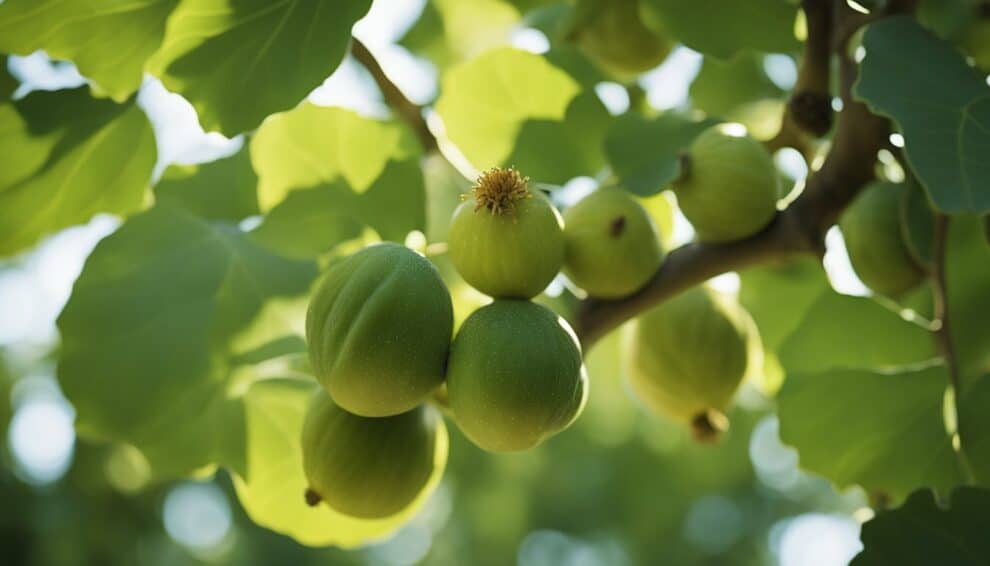Figs are a delicious and nutritious fruit that have been enjoyed for thousands of years. Native to the Middle East and Mediterranean regions, the fig tree (Ficus carica) is an easy-to-grow plant that produces an abundance of sweet, juicy fruit. Turkish figs, in particular, are known for their exceptional flavor and are highly sought after by fruit enthusiasts around the world.

Propagating Turkish figs is a simple process that can be done by anyone with a little bit of patience and a green thumb. Whether you are an experienced gardener or a beginner, growing your own fig tree can be a rewarding and satisfying experience. In this article, we will explore the ins and outs of propagating Turkish figs, from selecting the right variety to caring for your tree throughout the growing season. Whether you are looking to start a small backyard orchard or simply want to enjoy the sweet taste of fresh figs, this guide will provide you with all the information you need to get started.
Understanding Turkish Fig Biology

Fig Reproduction and Pollination
Turkish figs (Ficus carica) are deciduous trees that belong to the mulberry family. They are propagated through cuttings, which are taken from the mature wood of the tree during the dormant season. The cuttings are then rooted in a well-draining soil mixture and kept in a warm, humid environment until they develop roots.
Turkish figs are unique in that they do not require pollination to produce fruit. The figs are actually inverted flowers, and the tiny flowers inside the fig are pollinated by a species of wasp. However, the figs that are commonly eaten are the ones that do not require pollination and are parthenocarpic, meaning they can produce fruit without fertilization.
Varieties of Turkish Fig
There are several varieties of Turkish figs, each with its own unique flavor and texture. Some of the most popular varieties include:
- Black Mission: This variety has a dark purple skin and a sweet, rich flavor.
- Brown Turkey: This variety has a light brown skin and a mild, sweet flavor.
- Kadota: This variety has a greenish-yellow skin and a honey-like flavor.
- Calimyrna: This variety has a light greenish-yellow skin and a nutty flavor.
Each variety requires specific growing conditions and has different harvesting times. It is important to research the specific variety before planting to ensure optimal growth and fruit production.
Cultivation Techniques
Choosing the Right Cuttings
When propagating Turkish fig trees, it is important to choose the right cuttings. The best time to take cuttings is during the dormant season, which is usually from late autumn to early spring. The cuttings should be taken from healthy, disease-free trees that are at least two years old. It is recommended to take cuttings that are about 6-8 inches long and have at least two nodes.
Soil Preparation and Planting
Before planting the cuttings, it is important to prepare the soil properly. The soil should be well-draining and rich in organic matter. A pH of 6.0-6.5 is ideal for Turkish fig trees. If the soil is too acidic, add lime to raise the pH. If it is too alkaline, add sulfur to lower the pH.
To plant the cuttings, make a hole in the soil with a pencil or a dibber and insert the cutting. Make sure that at least one node is buried in the soil. Water the cutting immediately after planting and keep the soil moist but not waterlogged.
Watering and Feeding Requirements
Turkish fig trees require regular watering, especially during the first year after planting. Water the tree deeply once a week during dry periods. Be careful not to overwater, as this can lead to root rot.
Fertilize the tree with a balanced fertilizer in early spring and mid-summer. Use a fertilizer with a 10-10-10 or 8-8-8 ratio of nitrogen, phosphorus, and potassium. Apply the fertilizer according to the manufacturer’s instructions.
By following these cultivation techniques, propagating Turkish fig trees can be a rewarding and fruitful experience.
Propagation Methods

Layering Technique
One of the most common methods of propagating Turkish figs is through layering. This technique involves bending a branch of the fig tree down to the ground and burying a section of it in soil. The buried section of the branch will develop roots, which will eventually grow into a new tree. This method is effective because it allows the new tree to benefit from the established root system of the parent tree.
To propagate a Turkish fig tree using the layering technique, follow these steps:
- Choose a healthy branch that is flexible enough to bend down to the ground.
- Gently scrape the bark off a section of the branch where it will come into contact with the soil.
- Bury the scraped section of the branch in soil, leaving the tip of the branch exposed above ground.
- Water the newly buried section of the branch regularly until it develops roots and begins to grow.
Using Cuttings for Propagation
Another method of propagating Turkish figs is through the use of cuttings. This method involves taking a cutting from a healthy fig tree and planting it in soil to grow into a new tree. This method is effective because it allows for multiple trees to be grown from a single parent tree.
To propagate a Turkish fig tree using cuttings, follow these steps:
- Choose a healthy branch from the parent tree and cut a section of it that is at least 6 inches long.
- Remove the leaves from the bottom half of the cutting.
- Dip the cut end of the cutting in rooting hormone.
- Plant the cutting in soil, burying the bottom half of the cutting in the soil.
- Water the cutting regularly until it develops roots and begins to grow.
Both of these methods can be effective for propagating Turkish figs, and each has its own advantages and disadvantages. It is important to choose the method that works best for your specific situation and to follow the proper steps to ensure success.
Pest Management and Disease Prevention

When propagating Turkish figs, it is important to be aware of potential pests and diseases that may affect the plant. Here are some tips for pest management and disease prevention:
-
Inspect the plant regularly: Regular inspection of the plant can help identify any pests or diseases early on. This can help prevent the spread of the problem and minimize damage to the plant.
-
Practice good sanitation: Keeping the area around the plant clean and free of debris can help prevent pests and diseases from taking hold. Remove any fallen leaves or fruit from the ground and dispose of them properly.
-
Use natural pest control methods: Consider using natural pest control methods, such as insecticidal soap or neem oil, instead of harsh chemicals. These methods can be effective and are less harmful to the environment.
-
Monitor for common pests: Some common pests that may affect Turkish figs include spider mites, scale insects, and mealybugs. Monitor the plant closely for any signs of these pests, such as webbing or sticky residue on the leaves.
-
Prevent fungal diseases: Fungal diseases can be a problem for Turkish figs, especially in humid or wet conditions. To prevent these diseases, avoid overhead watering and ensure good air circulation around the plant.
By following these tips, gardeners can help ensure the health and vitality of their Turkish fig plants, and enjoy a bountiful harvest of delicious fruit.
Frequently Asked Questions

What’s the best season to plant Turkish fig cuttings?
The best season to plant Turkish fig cuttings is late winter or early spring when the soil is moist and warm. This allows the cuttings to establish roots before the heat of summer arrives.
How long does it take for a fig tree to bear fruit after propagation?
It can take up to three years for a newly propagated fig tree to bear fruit. However, this can vary depending on the variety of fig, growing conditions, and how well the tree is cared for.
What are the most effective methods for rooting Turkish fig cuttings?
The most effective methods for rooting Turkish fig cuttings are air layering, rooting hormone, and bottom heat. Air layering involves creating a small wound on the stem and covering it with moist soil to encourage root growth. Rooting hormone can be applied to the cut end of the stem to stimulate root growth. Bottom heat can be provided by placing the cutting in a warm, humid environment.
Is it possible to propagate a fig tree from just a leaf or does it require a stem cutting?
It is not possible to propagate a fig tree from just a leaf. Fig trees can only be propagated from stem cuttings.
What type of soil conditions are ideal for growing a healthy Ficus carica?
Ficus carica prefers well-draining soil that is rich in organic matter. A pH level between 6.0 and 6.5 is ideal. The soil should be kept moist but not waterlogged.
How much water does a newly propagated fig tree need?
Newly propagated fig trees should be watered regularly to keep the soil moist but not waterlogged. The soil should be allowed to dry out slightly between waterings. As the tree establishes roots, it will require less frequent watering.













